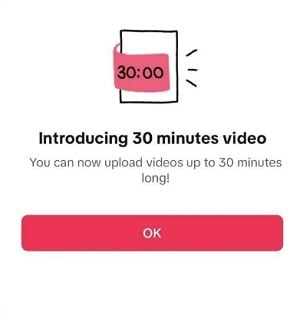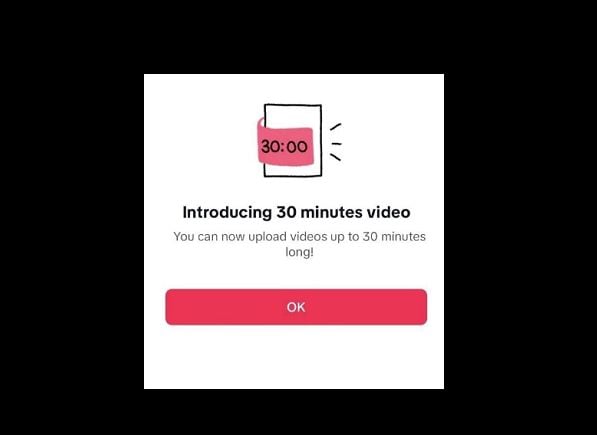The next stage of TikTok is coming, with some users now seeing the option to upload 30 minute long videos in the app.

As you can see in this example, shared by social media expert Matt Navarra, TikTok’s currently testing the new 30 minute upload option in the beta version of the app.
Which, if you’ve been paying attention, is not really any big surprise.
TikTok has been steadily increasing its maximum post limit for years, with the platform originally starting at 15 seconds per clip, which was then extended to 60 seconds, then 3 minutes, then 5 minutes, before rising to 10 minutes in 2022.
Last October, TikTok began experimenting with 15 minute uploads, so the trend towards longer clips isn’t new.
Though 30 minutes is likely the upper limit, based on the Chinese version of the app. Douyin, which is TikTok in China, expanded its upload limit to 30 minutes per clip in 2022, and it hasn’t gone any further as yet.
And presumably, Douyin has also seen good response to this longer time limit, which is why TikTok is now looking to implement the same, though it does seem like a long time to be watching a TikTok clip in-stream.
Will users really warm to TV show length clips in the app?
I guess some will, and if TikTok already has the infrastructure in place to support such, based on its experience with Douyin, it’ll be able to enact longer uploads, and provide more capacity for creators in the app.
Which will also include broader monetization potential, based on pre and mid roll ads, which can then be attributed back to the creator directly. That’s been a key challenge for TikTok, in facilitating effective monetization, and keeping creators aligned to its app. YouTube can offer better revenue potential, because it shares the income from ads shown within each clip, but in shorter, 30-second videos, that’s not possible, as you can’t use pre and mid roll approaches, and you can’t directly attribute viewing of ads shown in-between shorter clips.
30 minute uploads could provide some solution on this front, and could be another step towards expanded revenue sharing for TikTok creators.
And maybe it does work, maybe it has worked already on Douyin, and maybe I’m underestimating the attention spans of TikTok’s target market.
Either way, it’s another step for TikTok, as it looks to become a bigger destination for entertainment, and not just a supplementary engagement tool for longer video creators.



